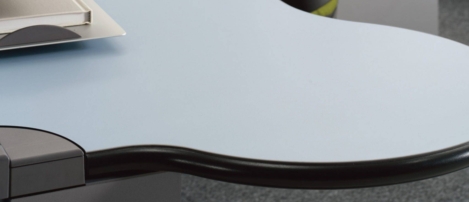December 7, 2015
Groundbreaking office sharing scheme rolled out to over 100 UK councils 0
 One of the most intriguing and yet least talked about developments in the UK’s workplace design and management scene over the past couple of years has been the roll out of the One Public Sector Estate scheme, which encourages local authorities to share and divest parts of their vast, messy and under-utilised estate. The Cabinet Office, the central government department behind the scheme, claims that the current programme involving 32 local authorities will yield around £129 million in property sales and savings of £77 million in running costs over a period of five years. Now, more than 100 councils are set to join the scheme including several that are set to acquire greater autonomy through the Government’s plans for devolution. The new regions set to sign up to the programme include Greater Manchester, the City of Liverpool, West Midlands and Sheffield as part of 24 new ‘partnerships’.
One of the most intriguing and yet least talked about developments in the UK’s workplace design and management scene over the past couple of years has been the roll out of the One Public Sector Estate scheme, which encourages local authorities to share and divest parts of their vast, messy and under-utilised estate. The Cabinet Office, the central government department behind the scheme, claims that the current programme involving 32 local authorities will yield around £129 million in property sales and savings of £77 million in running costs over a period of five years. Now, more than 100 councils are set to join the scheme including several that are set to acquire greater autonomy through the Government’s plans for devolution. The new regions set to sign up to the programme include Greater Manchester, the City of Liverpool, West Midlands and Sheffield as part of 24 new ‘partnerships’.




















 In years gone by, a ‘one size fits all’ approach to office design might have been the norm, but as the decades have progressed, so too have the options available to businesses designing ‘homes from home’ for their office-based workforces. As new interpretations of the office environment proliferated, so the open plan model came to into being and eventually evolved into the default office design model. This initially brought greater variety than ever before but, ultimately, a one size fits all mentality in
In years gone by, a ‘one size fits all’ approach to office design might have been the norm, but as the decades have progressed, so too have the options available to businesses designing ‘homes from home’ for their office-based workforces. As new interpretations of the office environment proliferated, so the open plan model came to into being and eventually evolved into the default office design model. This initially brought greater variety than ever before but, ultimately, a one size fits all mentality in 
 I was involved in a meeting with an office fit-out company this week which involved a discussion of how their clients can develop misconceptions about the extent to which their contemporaries are introducing new office design and management models based on agile working, shared space, mobile technology and all that other good stuff. This presents a particular challenge for firms in the sector because their day to day experiences of what clients talk about and ask from them can be pretty removed from the things talked about in the media. If you were to judge the state of the office solely on the basis of what you read and hear and see at shows, it would be easy to conclude that the office is indeed dying and dragging down with it the markets for office furniture, commercial property and traditional technology. The problem is that the facts don’t support that notion at all.
I was involved in a meeting with an office fit-out company this week which involved a discussion of how their clients can develop misconceptions about the extent to which their contemporaries are introducing new office design and management models based on agile working, shared space, mobile technology and all that other good stuff. This presents a particular challenge for firms in the sector because their day to day experiences of what clients talk about and ask from them can be pretty removed from the things talked about in the media. If you were to judge the state of the office solely on the basis of what you read and hear and see at shows, it would be easy to conclude that the office is indeed dying and dragging down with it the markets for office furniture, commercial property and traditional technology. The problem is that the facts don’t support that notion at all.










December 8, 2015
Linear equations are no longer enough to determine the size of offices
by Mark Eltringham • Comment, Facilities management, Furniture, Technology, Workplace design
In 2013, the US Census Bureau announced that the official human population of the Earth had exceeded 7 billion for the first time. This provoked people to raise concerns that were couched in Malthusian pessimism. Although people might have assumed we’d left behind this kind of flawed thinking, there is obviously something appealing about the idea that exponential population growth is unsustainable when resources increase only in arithmetical terms. We’ve got a problem but what we should have learned in the two centuries since Thomas Malthus first popularised the idea is that there are complex factors that can influence the resources we need to survive, not least in terms of greater efficiency in the way we produce them. A similar debate is also apparent in the way in which the commercial property market is able to offer the right sort of buildings for modern organisations.
(more…)